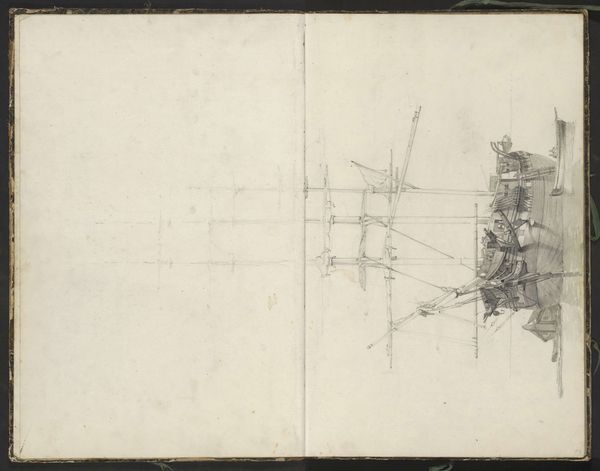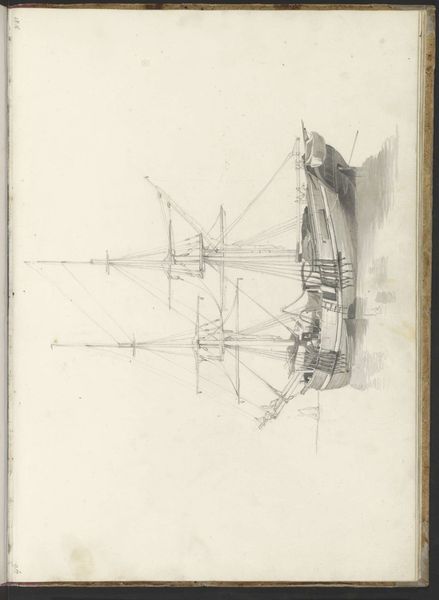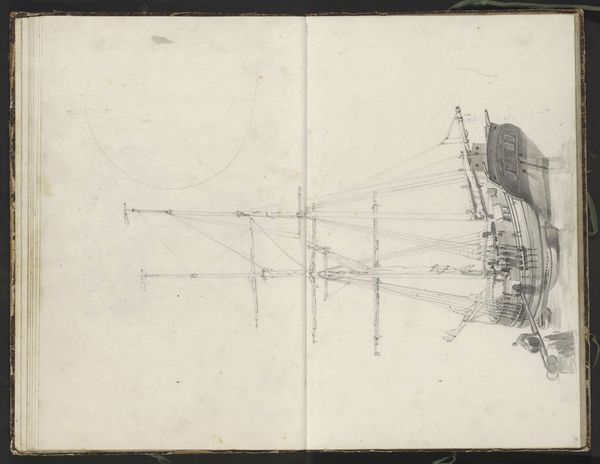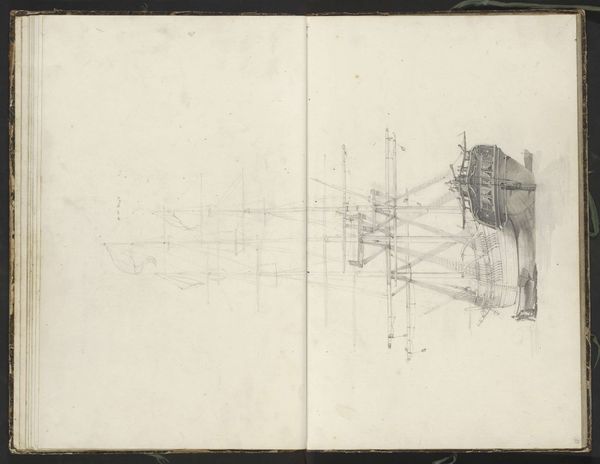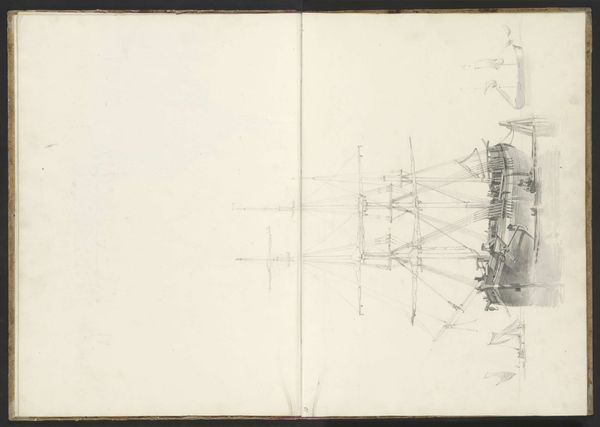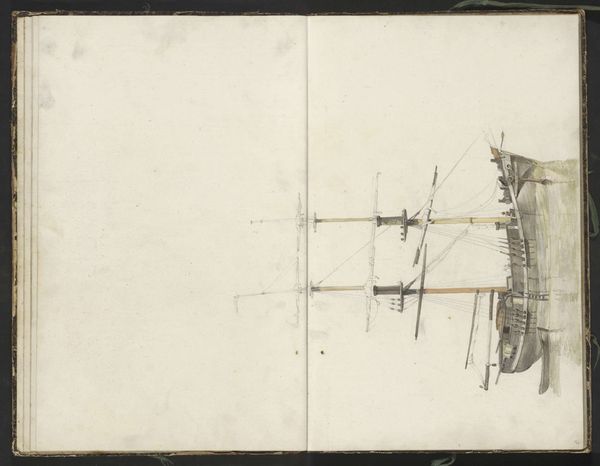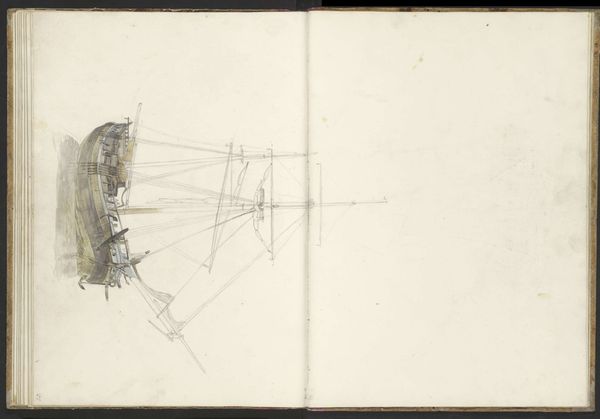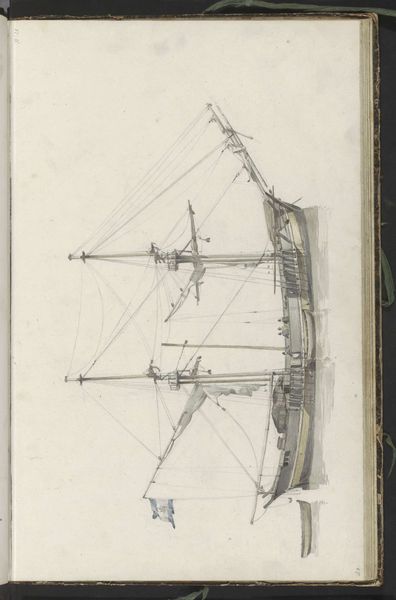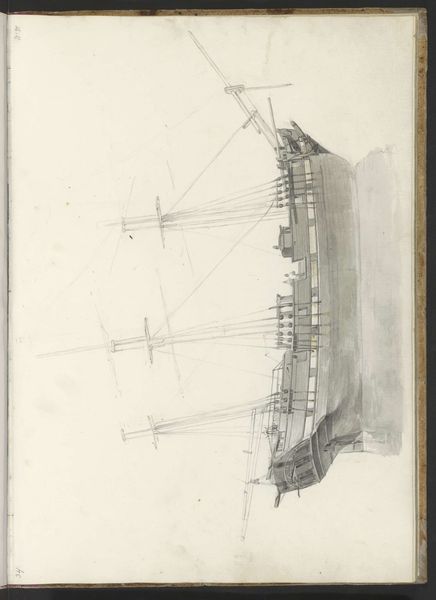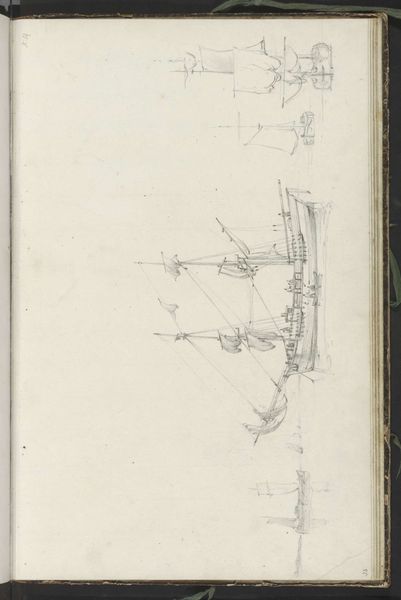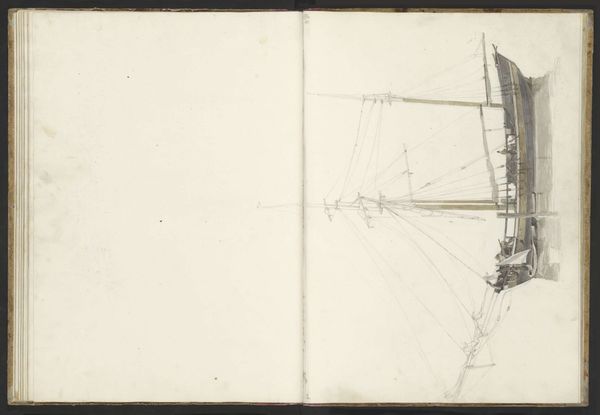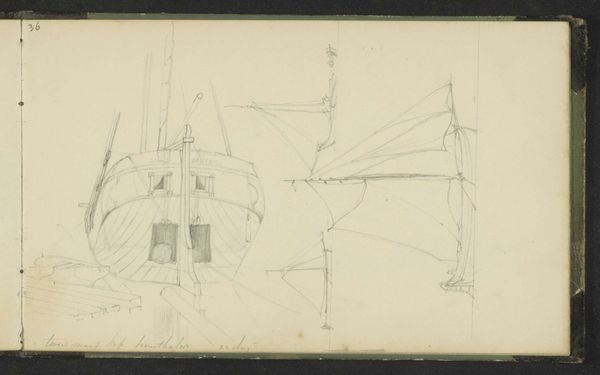
drawing, pencil
#
drawing
#
quirky sketch
#
pen sketch
#
sketch book
#
incomplete sketchy
#
hand drawn type
#
landscape
#
form
#
personal sketchbook
#
romanticism
#
pen-ink sketch
#
pencil
#
line
#
pen work
#
sketchbook drawing
#
cityscape
#
sketchbook art
#
realism
Copyright: Rijks Museum: Open Domain
Editor: Here we have "Driemaster," a drawing by Johannes Christiaan Schotel, dating from 1797 to 1838. It appears to be in a sketchbook, with pencil and ink marks. It feels incomplete, almost a study. What do you see in this piece, particularly given its medium? Curator: The sketchbook context is key. This isn't a finished presentation piece; it's raw material, documentation. Look closely at the lines – they betray the artist’s process. Where do the lines thicken, suggesting re-working or correction? What kind of paper would facilitate this type of sketching? Editor: I notice some lines are heavier than others, almost like he was pressing harder at certain points, perhaps defining the shape after a lighter sketch. Curator: Exactly! And why? What’s being emphasized by that heavier line? Consider Schotel's socio-economic position. Was he directly involved in shipbuilding or maritime activities, or was he perhaps commissioned to document these ships? Editor: That’s interesting. Maybe he wanted to highlight the specific parts that were more technically impressive, the ones he understood less intuitively? He may have worked from sketches to finished paintings for patrons, making this preliminary work especially important to understand his process. Curator: Precisely. And that opens questions about patronage and the consumption of maritime art at the time. Whose interests are being served by this representation of a ship? The shipbuilders, the merchants, the Navy? Consider too how this type of work democratized artistic creation—how do preliminary sketches affect the art world compared to formal, finalized compositions? Editor: I never really thought of it that way, but looking at it as a document of artistic labor definitely sheds new light on the drawing. It’s not just a pretty picture; it’s a record of production. Curator: Exactly. Examining materiality can reveal so much.
Comments
No comments
Be the first to comment and join the conversation on the ultimate creative platform.
